Wildlife crime is one of the greatest challenges facing conservation, and one of the conservation tech world's biggest areas of innovation. With new ideas and solutions constantly being put forth to track and protect species targeted by poachers, manage protected areas and support rangers, and combat the growing online market for illegal wildlife products, the engineers and conservationists working to solve wildlife crime's many challenges rely on tools like machine learning, biologging, camera traps, acoustic monitoring, drones, mobile apps, and more.
This wide variety of overlapping technology makes our Wildlife Crime group a potential melting pot for many of our other communities, and makes it an especially exciting place to find collaborators working in different tech spheres to meet a common goal. Whether you're a camera trap expert looking for information on thermal vision to spot potential poachers, a machine learning expert with the skills to analyze acoustic data for gunshots, or a protected area manager seeking the latest integrated mobile tools, this group can connect you with the right members of our community!
Below, you'll find WILDLABS resources and conversations to help you understand how different technologies are being put to work in the fight against wildlife crime, and what conservation tech practitioners need for these tools to be effective.
Three Tutorials and Videos for Beginners:
- How do I use AI to fight wildlife crime? | Lily Xu, Tech Tutors
- WWF Wildlife Crime Technology Project | Eric Becker, Virtual Meetups
- SmartParks | Laurens de Groot, Virtual Meetups
Three Forum Threads for Beginners:
- Snare detection technologies | Rachel Kramer
- Tools for conservation management | Chris Muashekele
- Looking for Intelligence Database Software | Dexter Oelrichs
Three Articles for Beginners:
- Using AIS data to investigate the world's fishing ports, Max Schofield
- How do Wildlife Crime Experts view Remote Sensing Technologies used to Combat Illegal Wildlife Crime?, Isla Duporge
- Metal Detecting Sensors for Anti-Poaching, Sam Seccombe
Join this group now to get to know our community and start discussing solutions and ideas together!
Header photo: © Frank af Petersens/Save the Elephants
Botswana Predator Conservation Trust



- 0 Resources
- 85 Discussions
- 10 Groups
- @serena.le
- | she/her
Conservation tech enthusiast
- 0 Resources
- 0 Discussions
- 25 Groups
I work in conservation on integrating the technology out there for custom solutions for partners.
- 0 Resources
- 0 Discussions
- 23 Groups
Passionate about wildlife and impact investment with an academic, research and practitioner background in environmental science, environmental law and green criminology pursued in Central America, China, Tanzania and the United Kingdom I am driven to decolonise the research on c
- 1 Resources
- 0 Discussions
- 9 Groups
Dedicated wildlife conservationist with over three years of hands-on experience in field research and conservation. Through extensive fieldwork i developed a strong foundation in various conservation techniques, including camera trap deployment, plant inventory methods.
- 0 Resources
- 0 Discussions
- 9 Groups
- @Venance
- | Mr
As a wildlife conservationist, I am deeply committed to the Ecology and Community Development. I help communities balance conservation with livelihoods, promoting beekeeping with the motto “Shusha Shoka, Pandisha Mzinga (Drop the Axe, Raise the Hive).
- 0 Resources
- 0 Discussions
- 8 Groups
Movement Ecologist studying the where, why, and how animals move throughout our world. Current work is investigating the movement and energetics of large neotropical bats in a changing environment with ephemeral resources.



- 0 Resources
- 23 Discussions
- 22 Groups
- @matt_hron
- | He/Him
Wildlife Protection Solutions (WPS)
Product Manager at Wildlife Protection Solutions



- 0 Resources
- 8 Discussions
- 8 Groups
University of British Columbia
Postdoc at UBC, exploring how drones enhance wildlife conservation using thermal cameras & AI tools to refine monitoring of large mammal populations in Canada & compare these approaches to traditional methods.
- 0 Resources
- 0 Discussions
- 7 Groups
Asst. Prof @ MIT with research at the intersection of computer vision, biodiversity monitoring, conservation, and sustainability.



- 4 Resources
- 15 Discussions
- 5 Groups
- @ImaniWilson
- | She / Her
Zoology with a placement year graduate from Bangor University. Interested in large African mammal movement and behaviour in response to climate change, particularly African elephants
- 0 Resources
- 0 Discussions
- 13 Groups
- @karinnacvijanovich
- | she/her
- 0 Resources
- 1 Discussions
- 7 Groups
Careers
Strategic Protection Of Threatened Species (NGO) is looking for engineering interns at the Dinokeng Game Reserve, South Africa
6 February 2025
The worst thing a new conservation technology can do is become another maintenance burden on already stretched field teams. This meant Instant Detect 2.0 had to work perfectly from day 1. In this update, Sam Seccombe...
28 January 2025
The Zoological Society of London's Instant Detect 2.0 is the world's first affordable satellite connected camera trap system designed by conservationists, for conservationists. In this update, Sam Seccombe describes the...
21 January 2025
The Connected Conservation is thrilled to announce our award's third round in collaboration with the Airbus Foundation. This award champions the use of cutting-edge satellite imagery to tackle biodiversity loss and...
30 September 2024
IWT Challenge Fund Evidence grants, ranging from £20,000 to £1,500,000, is a UK government grants scheme that provides support to innovative and scalable projects to reduce pressure on wildlife from illegal trade and,...
20 August 2024
WILDLABS is partnering with FLIR to give away a FLIR ONE Edge Pro to 5 community members.
26 June 2024
Wildlife Drones was deployed by Zoos Victoria in a trial project tracking captive-bred Eastern Barred Bandicoots that were tagged and released into the wild
14 June 2024
WildLabs will soon launch a 'Funding and Finance' group. What would be your wish list for such a group? Would you be interested in co-managing or otherwise helping out?
5 June 2024
Now accepting applications for two $15,000 grants to help protect wildlife through cutting-edge, technology-driven efforts
3 June 2024
The IEF's Elephant Conservation and Research Funding Support Program has opened a call for applications. Average grant size is $15K, whereas the IEF funds 20 to 25 projects per year.
22 May 2024
Do you have photos and videos of your conservation tech work? We want to include them in a conservation technology showcase video
17 May 2024
Article
Read in detail about how to use The Inventory, our new living directory of conservation technology tools, organisations, and R&D projects.
1 May 2024
June 2025
event
July 2025
November 2023
event
42 Products
1 R&D Projects
41 Organisations
Recently updated products
Recently updated R&D Projects
Recently updated organisations
| Description | Activity | Replies | Groups | Updated |
|---|---|---|---|---|
| The European project Nature FIRST is hosting its final conference at Ouwehands Dierenpark in the Netherlands on 25–26 June 2025,... |
|
Community Base, Conservation Tech Training and Education, Data management and processing tools, Earth Observation 101 Community, Emerging Tech, Human-Wildlife Conflict, Protected Area Management Tools, Wildlife Crime | 5 hours 48 minutes ago | |
| Hi Georg,Oh, that's a pity. But thanks anyway for checking!Really appreciate it!CheersMartina |
+10
|
Wildlife Crime | 1 week 2 days ago | |
| Hi Adam! Sounds like you have your work cut out for you. I have not used radar systems or AI systems for this sort of detection, but there are methods using change detection... |
|
AI for Conservation, Drones, Wildlife Crime | 1 month ago | |
| Hi @iainmcnicol , welcome to WILDLABS! Thanks for posting this on here. I have shared with my colleagues at Fauna & Flora who have some experience (especially with the... |
|
Community Base, Geospatial, Protected Area Management Tools, Wildlife Crime | 1 month 1 week ago | |
| Great dear Travis,This is a great news and an opportunity to me and my local bee keepers. It really sounds very helpful.Here is my contacts:Email: muganyizi@pales.or.tz ... |
|
Climate Change, Conservation Tech Training and Education, East Africa Community, Funding and Finance, Human-Wildlife Conflict, Wildlife Crime | 1 month 2 weeks ago | |
| You can also check out WWF's newly launched C2C: Conflict to Coexistence approach. It provides a framework and methodology for developing tailor-made human-wildlife conflict (HWC... |
+2
|
Wildlife Crime | 3 months 1 week ago | |
| Not a book, but a very real documentary:Stroop - Journey into the Rhino Horn War |
|
Wildlife Crime | 3 months 2 weeks ago | |
| Thank you so much for sharing! They seem to only state the official DFFE statistics nowadays. From my connections in SouthAfrica these numbers don't always seem to reflect... |
|
Wildlife Crime | 3 months 2 weeks ago | |
| Hey Xiona,I see that you are from a university that is very close to where I live. I have a platform that is well suited for combating wildlife crime and I perceive that it’s... |
+5
|
Wildlife Crime, Acoustics, Latin America Community | 4 months 3 weeks ago | |
| Hats off to your team for this absolute game-changing technology! We rescue stray and wild animals in Taiwan, and the bulk of our work is saving animals maimed by wire snares... |
+37
|
AI for Conservation, Drones, Emerging Tech, Human-Wildlife Conflict, Wildlife Crime | 6 months ago | |
| Because spotting the trucks on the roads is trivial. You could do it from 150m or further away in complete darkness. If this interests someone then I have a solution to do that. |
|
Wildlife Crime | 7 months 1 week ago | |
| Thanks, we know they are breeding these animals here, I asked, since it's seems to be an expensive hobby, we need to allocate more funding for rural women in entrepreneurship and... |
|
Acoustics, Animal Movement, Citizen Science, Human-Wildlife Conflict, Protected Area Management Tools, Wildlife Crime | 7 months 1 week ago |
Seeking collaboration and co-financing for PhD research: How land tenure arrangements impact upon illegal hunting in Sub-Saharan Africa
19 July 2017 11:19am
Leverage Space Technology for Wildlife Protection with the European Space Agency Kick-start Grant
5 July 2017 12:00am
Trialing Audiomoth to detect the hidden threats under the canopies of Belize
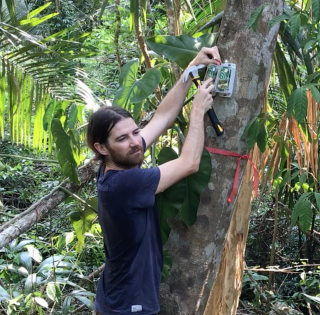 Andrew Hill
and 1 more
Andrew Hill
and 1 more
27 June 2017 12:00am
Wildlife Crime Tech Challenge: YIARI is helping protect slow lorises
23 June 2017 12:00am
Ideas for tackling illegal logging with technology?
9 November 2015 3:56pm
22 May 2017 3:51pm
A new article by Lyndsie Bourgon in the Smithsonian magazine highlights recent innovations that may be of interest to members of this discussion. The article is a fascinating read in its entirety, uncovering the loss of ancient trees from protected areas around the world.
How Thousand-Year-Old Trees Became the New Ivory
Ancient trees are disappearing from protected national forests around the world. A look inside $100 billion market for stolen wood
It was a local hiker who noticed, during a backwoods stroll in May 2012, the remains of the body. The victim in question: an 800-year-old cedar tree. Fifty meters tall and with a trunk three meters in circumference, the cedar was one of the crown jewels in Canada’s Carmanah Walbran Provincial Park. Now all that remained was a minivan-sized section of its trunk, surrounded by shards of wood and dust, with broken heavy equipment chains lying nearby... Lately, these living ecosystems have been disappearing across the province. In the past decade, forest investigators have found themselves fielding cases in which more than 100 trees were stolen at once.
...
Global timber theft has grown into a “rapidly escalating environmental crime wave” according to a 2012 report by the United Nations Environmental Program (UNEP) and Interpol, titled Green Carbon, Black Trade. The report estimates estimate that somewhere between 15 to 30 per cent of the global timber trade is conducted through the black market and linked to organized crime outfits that wouldn’t balk at trading weapons or humans. Now with armed “timber cartels” as part of their operation, these groups have identified profit in the immense value of ancient nature.
...
Two main factors have made timber so appealing in recent years. First, the pay-off: One massive old growth cedar can fetch close to $20,000. A report released in 2000 from the Canadian Forest Service’s Pacific Forestry Centre noted theft of Canada’s timber as a growing problem, costing B.C. $20 million annually. Red cedar is especially at risk, with thieves often specifically targeting its ‘high grade’ old growth. Even smaller parts of trees can be incredibly valuable: In 2014 there were 18 cases of thieves hacking out chunks of burl from 1000-year-old California redwoods.
Second, stealing trees is low-risk. In a globalized economy, timber is exceptionally easy for thieves to get their hands on, says Cameron Kamiya, Canada’s only full-time forest crime investigator. And the Carmanah is the perfect place to commit a crime: a remote rainforest sanctuary on the Canadian west coast, thick with damp air and spearmint canopies of moss. It is so vast and so sparingly visited that park wardens only patrol the area about four times a year.
...
CITES, a convention that many countries follow, regulates the trade of plants and animals, including about 600 timber species. About 400 of these species—including rosewood, bigleaf mahogany and Asian yews—are actively, commercially exploited. In theory, countries that participate in CITES agree to subject exporters to trade regulations, including requiring that they show a permit for the wood they are trading.
But Chen Hin Keong, head of the Global Forest Trade Programme at the wildlife trade monitoring organization TRAFFIC International, says that permits often aren't requested. “There is a good chance that they won’t ask. No one bothers,” says Keong. “If I’m a retailer selling furniture, I can ask my supplier if it’s legal, but he might buy the materials from 10 different sources and he’ll have to check. He might buy his plywood from one place, his dowels from another, planks from somewhere else.”
...
IV. Fingerprinting the Forest
As global tree researchers get more savvy, they’re figuring out how to fingerprint wood products back to the ancient trees they came from.
Eleanor White, a retired molecular biologist with the Canadian Forest Services, was the first to develop a way to “fingerprint” trees. In the late 1990s, she developed a method that has since played a key role in advancing a database of red and yellow cedar DNA in British Columbia. White’s method uses a mixture of solvents to isolate short, repeated DNA segments “microsatellites” from samples of wood. Like fingerprints, each tree has a unique pattern of these microsatellites.
Tree fingerprints are just one promising innovation in a relatively new field: forest forensics. New scientific developments are being used to raise the stakes of this kind of lucrative, difficult-to-trace theft. The goal is to dissuade both individual poachers—those who take trees for firewood, or harvest a Christmas tree from preserved land—and large-scale timber thieves alike.
In Oregon, U.S. Fish and Wildlife has developed its own forensics lab to investigate cases of poaching and timber theft. Ken Goddard, the lab’s director, has been working in park crime since 1979. He wrote a manual for environmental crime scene investigation and is also a bestselling serial novelist, having written books like Double Blind, which follows a U.S. Fish & Wildlife special agent into the wilderness.
Today he runs the only lab in the world dedicated to crimes against wildlife—“though we sure don’t want to be,” he says. They tackle some of the most bizarre crimes in America: illegally imported caviar, poached bear gall bladder, plants coated in banned pesticides, and of course, tree poaching.
“When we first started looking at it”—tree theft—“we were stunned,” says Goddard. “We were starting to hear stories from agents in other countries, about entire forests being clear-cut and ships filled with raw trees in containerized cargo. At that point we couldn’t make an identification if it was milled into planks, so we had to come up with something.” Right now they spend a lot of time handling the illegal import of agarwood, which most often makes its way to the lab in the form of wood chips or incense sticks. Known for its dark, aromatic resin that provides the musky, earthy smell common in manufactured scents, a kilo of agarwood can sell for up to $100,000.
The lab guides investigators who intercept these shipments on how to get samples. It isn’t exactly glamorous. The work includes digging through shipping containers filled with raw material and extracting single logs or planks to take back to the lab. “It’s pretty horrendous work, the mechanics and science of it,” says Goddard. “You’re supposed to take a random sampling for results, but imagine a container full of 2x4s and you’re supposed to take the 412th 2x4 in the bunch. It’s a tremendous amount of physical work, to get that sample.”
Very little of the work that the lab’s criminologists, Ed Espinoza and Gabriela Chavarria, do is actually based in the forest. Rather, they most often examine evidence that has already been manipulated; that is, the tree has already been turned into a product. The team will receive boxes of wood chips or shipments of milled, kiln-dried planks from Fish & Wildlife agents or border inspectors, and get to work hunting around for specific ions to determine the species of wood.
They use chemistry to nab tree poachers after the act, because by the time the samples get to them, the wood is almost unrecognizable. On rare occasions, they have been asked to study full logs or planks that have been misleadingly labeled or declared. “With all the shows today, they mix up CSI with forensics and it really isn’t,” says Espinoza.
Espinoza has done groundbreaking work when it comes to developing a method to identify tree genuses: “Up until a few months ago, as far as anyone in the world could go was family,” says Goddard. Espinoza’s work has since been applied to a species of trees called aguilaria, in which agarwood falls. “It’s a mind-boggling discovery,” says Goddard.
Espinoza uses mass spectrometry to identify chemical compounds, essentially by turning an unknown liquid (in this case, oils from bark) into a gas and then injecting it into the dart instrument. The chemical compounds then show up on a screen a few seconds later.
In addition to forensics, there have been some attempts by non-governmental organizations to push for a customer-driven solution. The World Wildlife Foundation is working with companies like Kimberly Clarke, Hewlett-Packard and McDonald’s to help identify places in their supply chain where they may be inadvertently part of the world’s illegal timber trade. McDonald’s, for instance, is focusing entirely on the origins of its paper packaging.


20 June 2017 1:48pm
@victoria from Global Trees Campaign just flagged an event for us over on twitter that might be of interest to this thread in particular. Starting in jus ta few hours, the Forest Governance Project at Chatham House will be hosting a livestream debate: 'What challenges and opportunites are pos3ed by satellite technology and how can it help stakeholders across the timber suply chain?'.
Starting in a few hours... join @CH_Logging's livestream on tackling illegal logging with satellite technology. @WILDLABSNET https://t.co/eeqwiVOf38
— GlobalTreesCampaign (@globaltrees) June 20, 2017
WATCH HERE: https://www.chathamhouse.org/livestream


Wildlife conservation & networking technologies
5 August 2016 8:54am
23 February 2017 9:05am
@ Jan Kees are you working in th Netherlands by any chance?
23 February 2017 12:26pm
@Theun , that's right. Amsterdam to be exact ;-)
Can I help you with anything?
13 June 2017 2:11pm
Hi Anthony, Isla's list is very comprehensive. The Vulcan Domain Awareness System (DAS) started at LEWA in Kenya where our own JIGZAW web based intelligence database and analysis network has been operational for 6 years. DAS is about current operations, JIGZAW is about sharing information from sources (open or covert) and creating intelligence on modus operandi and the players involved in poaching, supply chain, organised crime and corrupt officials. IT does similar things to I2 or Palantir (not automatic data linking) but its free. DAS and JIGZAW can share data. In Kruger there are examples of serioously joined up data sharing from sensors and Ten Boma in Tsavo is doing similar things with some success I believe. Our approach is more strategic, which is to enable information sharing between NGOs and protected parks and trusted national agencies. The key word is trust. There is a lack of analytical capacity at the tactical level and at present Big Data is not yet the best way to capture what the local people are saying, thinking and concerned about. It is sheer old fashioned HUMINT and that takes training and resources. JIGZAW helps people who know how to do that, to do it securely and more efficiently. JIGZAW is also license free software only to those in the wildlife conservancy business. Brief presentation attached. Good luck
Head mounted display for drones and possibly mobile devices
26 May 2017 12:58am
26 May 2017 10:46am
Hi dave
FLIR is the leading US company in thermal industry, most of their product is for industry and Militry. The price is from $6000+. When i check their webstie, found that their have small model works well with smart phone~
Beginning of smaller, cheaper and lighter such devices. ~ ~ Another thermal DJI will come out ~ ~
Kai
From the Field: Eric Becker and designing sensors for wildlife
22 May 2017 12:00am
New Demand Reduction Community of Practice Newsletter
19 May 2017 2:03pm
Wildlife Crime Tech Challenge: Mars Omega LLP Boosts Wildlife Crime Intelligence
11 May 2017 12:00am
acoustics for Human-Wildlife Conflict Prevention, Anti-poaching, and more
27 April 2017 6:40pm
8 May 2017 4:13pm
Thanks very much for cross-posting this update, @Jan+Kees - where are you field testing the SERVAL-sensor?
Getting SMART in Cambodia
8 May 2017 12:00am
Using social media to survey exotic pet owners
3 April 2017 2:08pm
6 April 2017 5:23am
Thanks @StephODonnell for the mention,
Our study (TRAFFIC) has shown that the social media used is really dependent on the country. Some countries prefer Facebook, other Instagram, there are other options such as WeChat and Blackberry Messenger, but these require more private access.
Another issue is the language, you will get more in the local language of each country compared to English. This is something that has been overlooked.
But if you want to use Facebook and Instagram, you already have a lot of going on and a big story there. I would suggest that as the easiest and most accessible one.
We found that manual surveys (Taking screenshots and manually entering data into excel) is good to get a general idea of what is going on, but not effective to capture information such as market turn over, or how much increase/ decrease in demand and offer there is.
Many groups that work in data mining and machine learning have also come up with methods to automatically extract data. I know a group in NYU is even developing an app to monitor the online market: https://news.mongabay.com/wildtech/2016/10/egi-filling-in-the-gaps-in-law-enforcement-for-the-online-wildlife-trade/
Just a little note from me, is to ensure that you are also taking into considerations privacy matters when you publish. It is still not clear on the regulations of how to use data uploaded in social media. And it's also country specific on the legal aspects of that.
Anyway, I am more than happy to talk more if you need to. PM me if needed and we can chat more
Hope this helps
Karlina
13 April 2017 6:19am
Lindsey,
You might also want to consider WeChat as a key channel. I know that it is very commonly used to trade wildlife in China and Vietnam. It is more of a texting service, however, so I'm not sure if that would be in the scope.
Rosemary
25 April 2017 5:26pm
Just to clarify, you mean illegal owners of exotic animals or legal owners? I'm assuming illegal because you reference wildlife crime, but in a lot of countries there are large amounts of legal domestically traded wildlife. It might be kind of difficult to get illegal traders to take the survey, but legal traders might be more receptive.
-John
Job opening!
19 April 2017 11:03am
Anti-Corruption Resource Center Brief on Technology for NRM
27 March 2017 10:24pm
11 April 2017 11:05pm
Thanks for sharing this Rachel.
There is some great technology in here and some fantastic ideas. I like the use of AI to create patroling routes that are more likely to catch poachers.
One thing the article doesn't seem to address directly is the challenge created by corrupt officials explicitly blocking the use of technology, prefering instead to keep records "off the the books." Is this potentially a problem?
In some of the more sensitive bio-diversity regions, social media is only so accessible, and digitization not only cost money, it requires explicit acceptance "on the ground." I don't have any answers, unfortunately. Maybe the ideas presented here can start circumventing some of the corruption, but until we can find a way to make sure that the governments, and officials, and local populations all see greater economic benefit from co-existing with biodervisity than through the exploitation of it, the challenge will continue.
12 April 2017 4:03pm
Thanks, @Drue+Freeman . You raise excellent points, here. In my experience with projects that use protected area monitoring and management software such as the Spatial Monitoring and Reporting Tool (SMART Conservation Software), transparency is enhanced and the influence of special interests/corruption can be reduced. But for robust results, it is importnat to move beyond pilots and encourage the adoption of a single system on a national level, throughout a country's parks, protected areas and (where appopriate) community-managed areas. Securing this kind of commitment requires robust funding and active engagement of government.
From the Field: Dr Raman Sukumar and Technology Developments Needed to Conserve Elephants
5 April 2017 12:00am
15 Risks and Opportunities for Global Conservation
31 March 2017 12:00am
#Tech4Wildlife Photo Challenge: Our favourites from 2016
1 March 2017 12:00am
A recap on the DC Zoohackathon
19 October 2016 7:52pm
20 February 2017 2:03am
Thanks for the report. Looks very interesting. Do you have plans to continue with new hackathons? And if so what lessons do you take from the first one?
20 February 2017 10:47am
Hi Theun,
We certainly do have plans for more hackathons (and potentially zoohackathons) coming up this year! We can't wait to share these plans with you very soon.
Our meetups and events group is the best placeo find out about local hacks and gatherings. @btmartinez just shared a hackathon you might be interested in (if you happen to be one of our washington DC members),
Do you plan on being in Washington, D.C. over Earth Day weekend? Join Conservation X Labs and teams of hackers, coders, makers, engineers, designers, entrepreneurs, creative thinkers and tinkerers to celebrate Earth Day weekend 2017 by creating solutions to challenging conservation problems in front of a global audience. Multidisciplinary teams will compete in an on-site event called Make for the Planet over three days of the Smithsonian's Earth Optimism Summit in Washington, D.C. (April 21-23, 2017). Equipment will be available to create prototypes and models of hardware and/or software solutions to specific conservation problems.
If you're keen to participate, you can discover more info and call for team mates over at Barabara's thread here.
As for your question about lessons learnt - did you have some specific aspects of hosting a hack you'd like feedback on? Are you thinking of hosting one yourself?
It would be interesting to hear from hosts like @Sophie+Maxwell and @Alasdair who did a tremendous job leading the ZSL hackathon or @demark from an organiser's perspective. Or even some of the participants like @zbaynhamherd ?
I'm also interested to hear from others who have been involved or hosted hackathons- @mygshah and @efegraus we've spoken about hackathons in the past, perhaps you might have perspectives to share?
Cheers,
Steph
20 February 2017 3:15pm
Hello - I wrote up a lessons learned from the Hack for Wildlife that we ran in Chicago. https://medium.com/@mygshah/i-just-ran-my-first-hackathon-you-can-too-49a1d1343963#.q27eyjm5z
But I'm also happy to answer any specific questions.
Gautam!
Vulture poisoning - tech based solutions?
29 December 2016 9:09am
3 February 2017 1:30am
This is a long shot, and I don't have much of a biology background, but : Would it be feasible to amplify the traces of human handling of meat enough to make that serve as a deterrent to any birds consuming tampered meat? My assumption is that a human has to handle meat to poison it, some traces of human-ness (fairmones/body oils) must rub off on that meat. Rather than designing sensors to trigger off specific chemicals, would we be better off just triggering off human intervention? Not sure how the sensors would be deployed, but...
10 February 2017 9:30pm
Thanks for sharing this interesting post Tarik and your insights into the problem....I like your thinking Kbala but as I understand it a sensor to detect human interference would be practically impossible with the current state of this kind of technology and at best it would be very expensive thus not feasible to use on enough birds to make an impact...
Tarik do you happen to know which of the 3 causes you mention causes the highest number of vulture mortalities? Or is there is any research on this topic?
-use in traditional medicine/uMuthi trade
-commercial farmers laying out poisoned
-rhino poachers that leaves poisoned carcasses behind
This is a great ecological concern considering the knock on effect the lose of Vultures and other raptors have on local ecosystems...
11 February 2017 7:54am
Hi Isla,
The 3 threats are all situational and location dependent. For example, in South Africa there is a very well established muti industry and huge muti markets in KwaZulu Natal and Gauteng. Use of vulture parts for traditional medicine is embedded in various cultures and there are numerous cases every year of vulture carcasses found with heads and other parts missing. There are very few parts of South Africa where predators can be found in high densities outside Protected Areas (as compared to Namibia) and so I would say that direct poisoning of vultures for Muti is probably the main caue of mortality in SA.
In Namibia, vultures are mainly (so far) an indirect mortality as a result of farmers setting out poisoned carcasses to kill predators that are either perceived threats to livestock or are actual problem animals. These farmers are targeting jackal, brown hyaena and caracal in aprticular but the end result for vultures is no different than direct poisoning for muti. Same agricultural poison used, same result. However, very worringly, there have been several incidents recently of direct poisoning of vultures for traditional medicine, particularly in the Zambezi/Caprivi area of Namibia.
As to mortalities of vultures from feeding of poisoned rhino or elephant carcasses, this is still a fairly new (I say that with not much info to go on) threat and only the various protected area authorities in the different countries will have this info. As this threat grows, i am sure that the Vulture Working Groups in the respective countries, as well as the research scientists involved will be able to map this form of poisoning and provid data on which form is resulting in the deaths of more birds. At this stage Im pretty sure that all these types of poisoning, irrespective of the root reason are causing large numbers of mortalities, given that to a vulture, a carcass is a carcass is a carcass.
I would say that it is imprtant to understand the reasons for the different forms of poisoning and then we can fight it. Bantu tribes have a very strong link to the use of animal parts for traditional medicine and black magic etc. so it is no surprise that direct poisoning of vultures for the muti trade is happening in the Zambezi region. In contrast, the poisoning of vultures in central and southern Namibia in particular is more linked to farmers (German/Afrikaans/Herero/Damara/Nama) aiming to kill predators and not vultures specifically. And of course rhino poachers and syndicates can be from any nationality,tribe or culture. So these 3 forms have different roots and need to be addressed differently. However, we are in a crisis situation and the 3 threats need to be dealt with immediately via law enforcement and strong sentances, while the research continues. We simply cannot afford to wait.
Just for your info. I was recently sent a link by another member of the forum on a new publication by Andrea Santangeli. Andrea and his team mapped vulture poisoning across the landscape for the entire country based on data gathered by various organizations. It is a fantastic paper with some really good data and reccommendations for future work and a way forward. The title is:
"Understanding, quantifying and mapping the use of poison by commercial
farmers in Namibia – Implications for scavengers' conservation and
ecosystem health"
I am aware also that SANBI in South Africa are offering a bursary for a Post-grad student to do a MSc. project on vulture use in the muti industry in SA and I know of several students who have worked on projects in SA related to the use of animal parts and potential effects on wild populations. Andre Botha of the Endangered Wildlife Trust in SA will have all or a lot of this info.
Hope all this helps!
Cheers
Tarik
Ranger Training Guidelines
9 February 2017 2:20pm
Conservation Leadership Programme 2017 Award
21 November 2016 12:00am
5 Smart Technologies That Will Crack Down On Wildlife Trafficking
14 November 2016 12:00am
How do you use remote sensing tech to combat wildlife and forest crime?
14 July 2016 10:43am
27 July 2016 6:48pm
Great! Looking forward to learning your results in August.
1 August 2016 9:19pm
Excellent thread! I look forward to hearing the results of the survey.
8 November 2016 10:25am
Hi everyone,
Isla has shared the results of this survey in a new article in our Resources area. You can read her full analysis of the survey results here:
https://www.wildlabs.net/resources/thought-pieces/what-are-risks-associated-using-remote-sensing-technology-combat-wildlife
I am interested to hear your thoughts about these results - do they match your expectations?
Steph
Neotropical Migratory Bird Conservation Act grants via USFWS
8 November 2016 12:00am
How do Wildlife Crime Experts view Remote Sensing Technologies used to Combat Illegal Wildlife Crime?
7 November 2016 12:00am
Zoohackathon: 'END LOOP - Coding to end wildlife trafficking'
22 September 2016 12:00am
Tiger poacher likely convicted due to camera trap evidence
23 November 2015 7:24pm
8 August 2016 11:16am
A new paper in Biological Conservation assesses the efficacy of camera trapping as a tool for increasing detection rates of wildlife crime in tropical protected areas:
The future of biodiversity in Asia is increasingly dependent on networks of effective protected areas. Three wildlife sanctuaries of the Bangladesh Sundarbans are typical examples of protected areas where detection and monitoring of threats is difficult due to low densities of patrol staff and low frequency of patrolling relative to the area that requires monitoring. The aim of this study was to use camera traps to quantify: 1) the levels of different types of illegal human activities (IHA), 2) spatio-temporal variation in illegal human activities, and 3) what proportion of camera trap records can be used to identify perpetrators. Each photograph was categorized as either illegal human activity (IHA) or legal human activity (LHA) based on interpretation of the particular human activity and equipment observed in photograph. For IHA, infraction type was based on the Bangladesh Wildlife (Conservation and Security) Act 2012. A total of 914 unique human activity events were recorded (872 IHA and 42 LHA) in camera trap photos over a total of 1039 trap nights. The best model suggests that during spring tide 91% of camera trapped locations in the West Sanctuary had IHA occurring in them during the survey period, while 84% and 74% locations had IHA in the South Sanctuary and East Sanctuary respectively. Camera trapping in remote areas can potentially help protected area managers to increase rates of detection of IHA in their conservation landscapes and increase rates of arrests and prosecutions by providing appropriate supporting evidence.
I'm interested to hear from the community on this one - are you using camera traps for purposes other than wildlife monitoring?
10 August 2016 4:21pm
That paper is available on Sci Hub.
Perspectives from the World Ranger Congress
10 August 2016 12:00am
GPS trackers in trafficked animal parts
26 July 2016 7:24pm













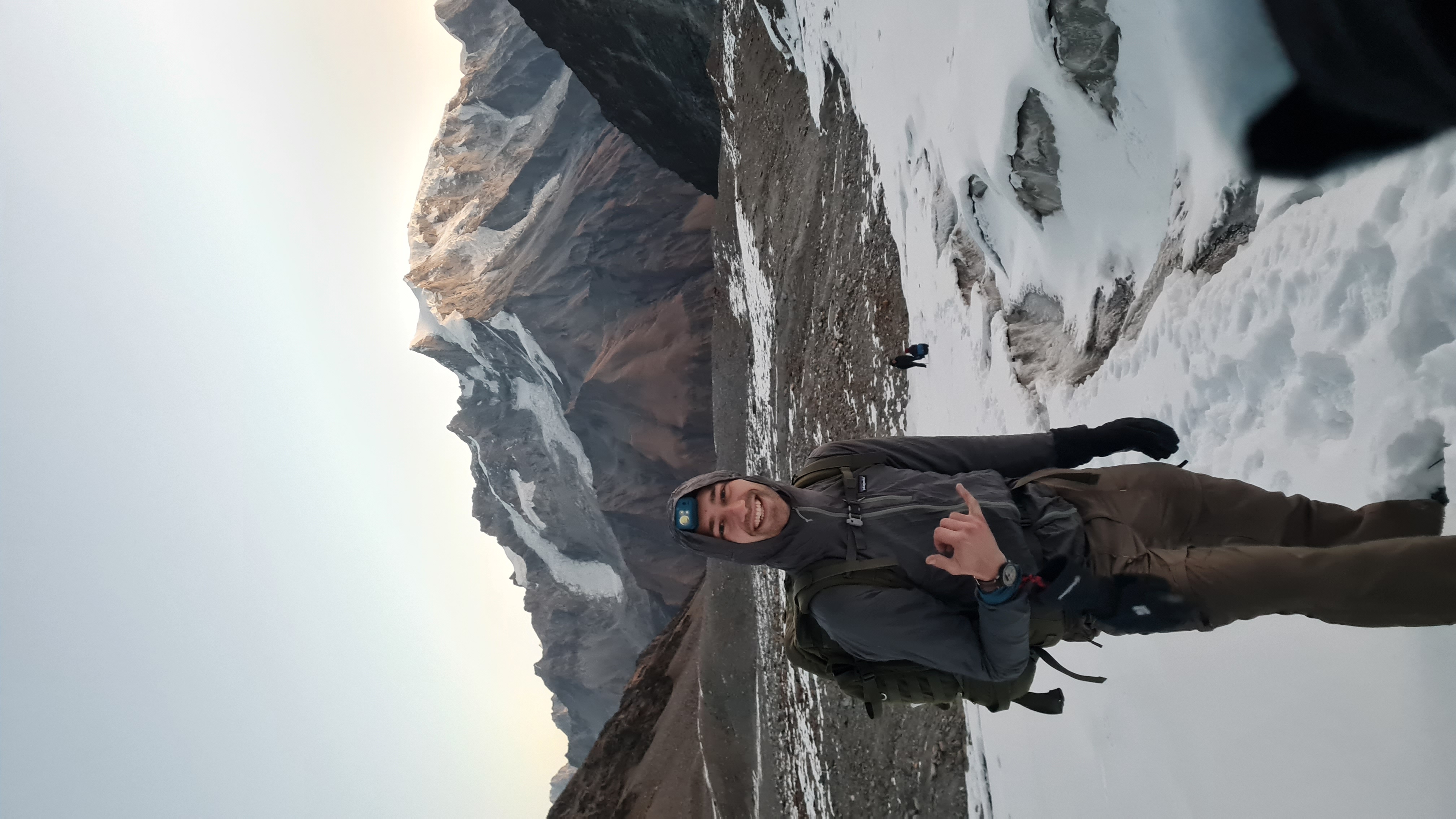
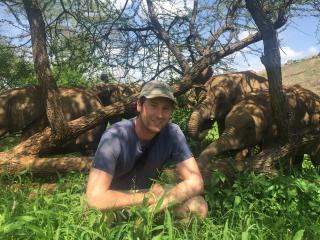



















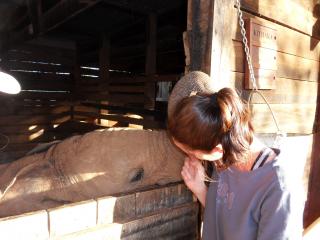




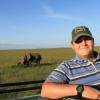






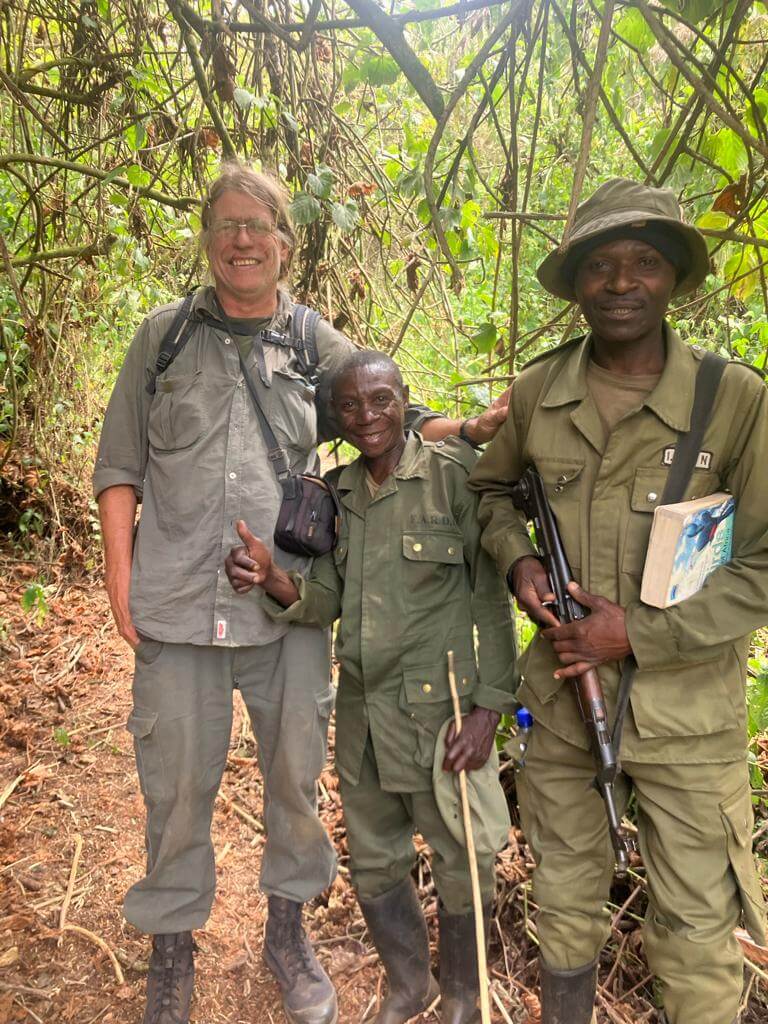




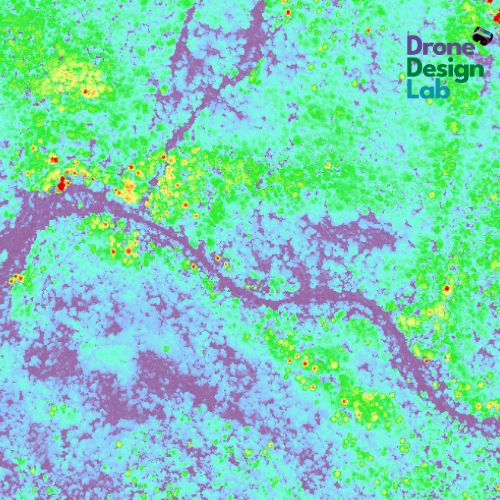
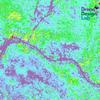












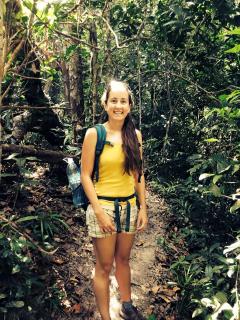



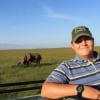

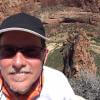

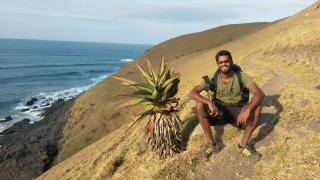




7 March 2016 11:32am
Many thanks, Chris. Whilst my understanding of blockchain technology is quite superficial, I can see it may have multiple additional applications for conservation, as you suggest.